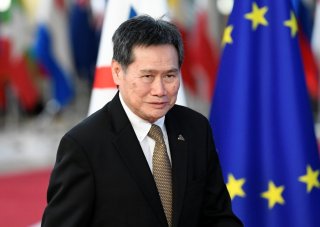What Global Gateway Means for ASEAN-EU Cooperation
The EU views ASEAN as a like-minded and essential partner in the Indo-Pacific region, and in its Global Gateway strategy.
Despite such problems, the BRI—and its sub-component Maritime Silk Road (MSR)—has been a mutually beneficial initiative for ASEAN countries and China. The massive size of funding available under the BRI makes it an attractive choice—and often the only available one. Here, the EU’s value-based investment scheme can help provide ASEAN with financing alternatives to the BRI that adhere to international standards and protect borrower countries. It can help negate, or at least reduce, China’s growing influence in the region and give ASEAN member countries increased strategic autonomy. Moreover, in conjunction with other investment and connectivity strategies of like-minded actors, such as Japan’s Expanded Partnership for Quality Infrastructure (EPQI), which supports the Master Plan on ASEAN Connectivity (MPAC) 2025, India’s Act East Policy (AEP), and the G7’s (or the U.S.-led) Build Back Better World (B3W) Initiative, the EU’s Global Gateway can be highly effective. These strategies have similar, complementary goals in enhancing connectivity via physical and digital infrastructure building. Together, they can be highly effective in competing with the BRI.
On the other hand, the fact that EU funding will be conditional and values-based could prevent some states from seeking European (or Western) funding opportunities. While the EU prides itself on being a “norm entrepreneur,” ASEAN is more concerned with norms and principles than values. Moreover, although Brussels shares strong relations with several ASEAN members, its bilateral ties with other states are more contentious—including Cambodia and Myanmar due to human rights concerns, Indonesia and Malaysia over a palm oil dispute, and Thailand and the Philippines over differences in their Free Trade Agreement negotiations. Considering this, the EU will need to find increased synergy and coherence in its shared values and vision with ASEAN to achieve goals set under its Global Gateway (and Indo-Pacific) strategy. Both the EU and ASEAN are ultimately multilateral bodies and have lengthy decision-making processes with often protracted negotiations to align member states’ divergent interests.
Nevertheless, as the EU High Representative for Foreign Affairs and Security Policy, Joseph Borrell, stated, a strong partnership with ASEAN has now become a “necessity.” A continued and increased dialogue will be critical to finding more common ground over shared imperatives. Finding alignment with partners like India and Japan to implement Brussels’ objectives under the Global Gateway initiative can be an effective way forward.
Dr. Jagannath Panda is a Research Fellow and Centre Coordinator for East Asia at the Manohar Parrikar Institute for Defence Studies and Analyses, New Delhi. Dr. Panda is the Series Editor for “Routledge Studies on Think Asia.”
This piece is the last part of a four-part series on EU’s Global Gateway Strategy factoring the Asian powers/bloc, primarily China, India, Japan, and ASEAN respectively. The first, second, and third parts of this series can be read here.
Image: Reuters.

